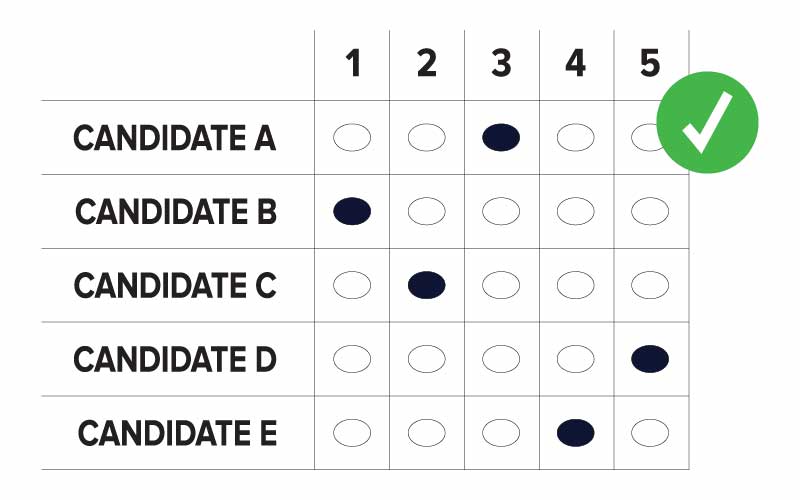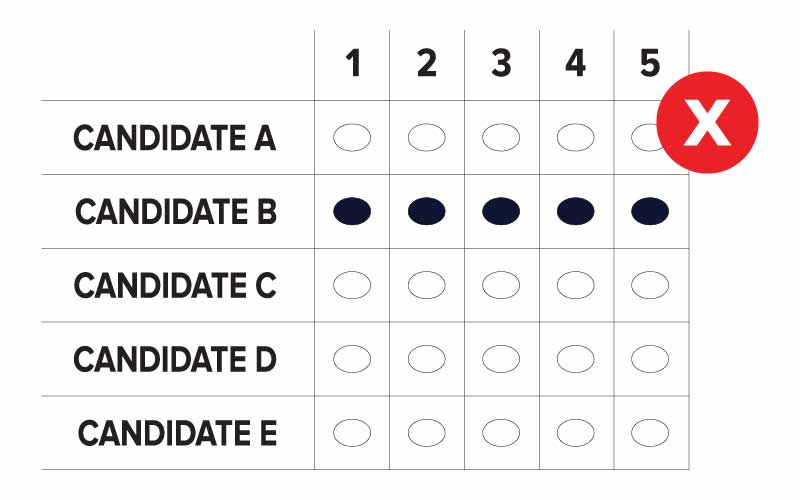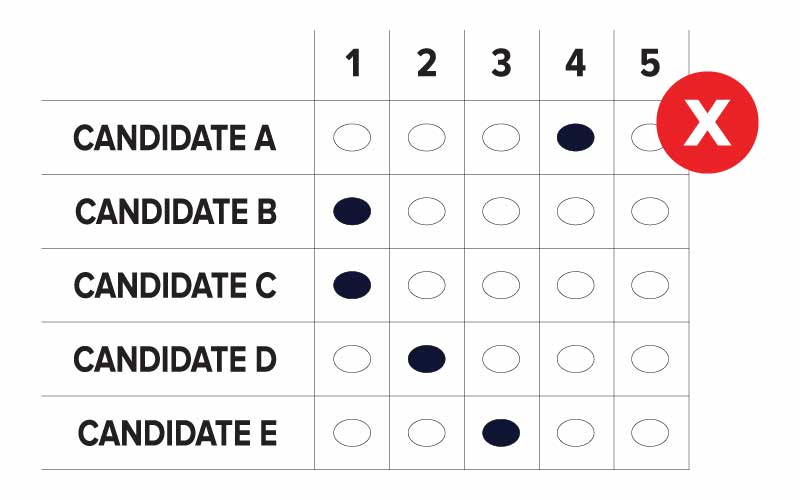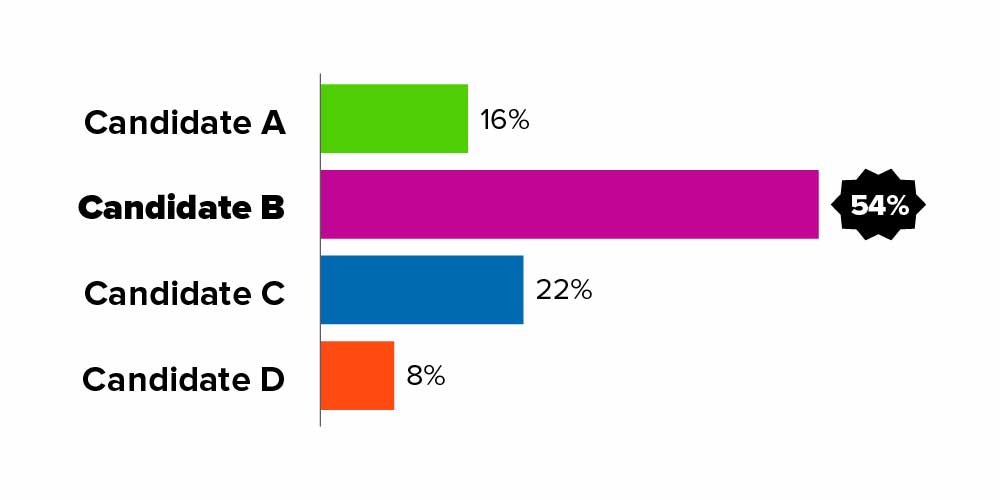


It’s the first time the city will implement ranked-choice voting for municipal primaries and special elections.
The following elections are not subject to ranked-choice voting as this applies just to NYC elections at this time:
Voters can rank up to five candidates in order of preference, instead of casting a vote for just one.
No, you can rank up to 5 but you can chose to rank less candidates. You can also only choose one candidate.
If a candidate gets a majority of votes (at least 50%) they are declared the winner.
If no candidate gets a majority of the vote,
If no candidate receives more than 50% of first-choice votes, the last-place candidate is eliminated. If your first choice is eliminated, your next choice will be counted, and so on. The process of elimination continues until there is a winner.
You can rank up to 5 candidates in order of preference.
Rank up to 5 candidates in order of preference.

Do not rank a candidate more than once. If you do, only your top ranking for them will count.

Do not give multiple candidates the same ranking. If you choose more than one candidate as your first choice, your ballot will not be valid.

If a candidate receives more than 50% of first-choice votes, they win the election.

If no candidate earns more than 50% of first-choice votes, then counting will continue in rounds.

Each round, the candidate with the fewest votes is eliminated. If your top-choice candidate is eliminated, your vote goes to the next highest ranked candidate on your ballot.

This process continues until there are only 2 candidates left. The candidate with the most votes wins!

Ranked Choice Voting gives you more say in who gets elected. Even if your top choice candidate does not win, you can still help choose who does.
More civility and less negative campaigning. Candidates who are not your top choice still need your support as your 2nd, 3rd, 4th, or 5th choice. This makes them more likely to appeal to a wider audience.
More diverse and representative candidates win elections. Cities that have implemented Ranked Choice Voting have elected more women and more women of color, making their elected officials more representative of their communities.
For more information, you can check out NYC Campaign Finance Boards' FAQs